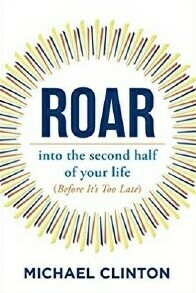Write Your Own Story Rather Than Have It Written for You

If you're like most people, a lot of planning probably went into what very well may have been your first half of life. You (along with your parents as a kid) chose where you lived, your schools, your friends, your career and, possibly, your life partner and whether to have children. By the end of your projected first half of life -- roughly age 40 for Americans, according to the actuaries -- many carefully thought-out decisions were made that guided the direction of your journey, both personally and professionally.
But what about your expected second half of life? Much less planning goes into the latter four or so decades, I'd venture, as individuals tend to stay on the various paths that they laid in the first half. Sure, changes typically take place -- relocations, job moves, maybe a divorce and remarriage -- but what one chose to do in one's younger  years more often than not dictates the trajectory of one's older years.
years more often than not dictates the trajectory of one's older years.
Need it be said, at midlife it isn't too late to create our future, a premise that Michael Clinton fully explores in his new book titled ROAR. Clinton, who served as the CEO of the Hearst Corporation and now serves as a special media advisor to that company, makes a compelling case that middle age is the ideal point in one's life to look back in order to look forward. (You can read an excerpt here.) We are all capable of breaking free of the less-than-optimal bits of yesterday, he convincingly argues, meaning we can forge better tomorrows if we are determined to do so.
In my reading of ROAR (an acronym for Reimagine Yourself; Own Who You Are; Act on What's Next for You; and Reassess Your Relationships), I parsed ten key ways to prepare for the demographically predicted second half of your life rather than just let it happen. These are, in no particular order:
- Chart your own course. Individuals should be the captains of their own ships, as self-determination is a person's most valuable asset.
- Open yourself up to any and all possibilities. The world is a very big place that offers infinite opportunities, good reason to maximize the odds of aligning your dreams with reality.
- Have a plan. It's better to design your future rather than leave it to others or to fate, and one is most likely to reach a desired destination if you know where you want to go.
- Take action. The path of least resistance is often not the ideal route; major life changes take courage and effort but can pay off big dividends.
- Exploit your "superpower." This is an ability or trait that nobody else possesses in quite the same way, and the inner, essential core of who one is as a human being.
- Conceive your own definition of success. Challenge the traditional narrative of success based on money, power and fame in order to develop a unique, personalized interpretation of the American dream.
- Be positive. Good things are more likely to happen when one believes they can and will, as optimism is directly tied to achieving goals of any sort.
- Act your age. Reject the culturally based notion that youth rules the day and leverage the many benefits that come with experience and simply getting older.
- Embrace risk. Recognize that the biggest rewards typically result from taking (informed) chances and subscribe to the belief that borders and boundaries can (and should) be broken.
- Seize the day. Time is the ultimate resource because it is finite for all of us, and mid-lifers should act now while they still can.
Net net, ROAR offers a template for how to be the author of the remaining chapters of your life, quite a valuable thing regardless of one's age.
Click the social buttons to share this story with colleagues and friends.
The opinions expressed here are the author's views and do not necessarily represent the views of MediaVillage.com/MyersBizNet.


